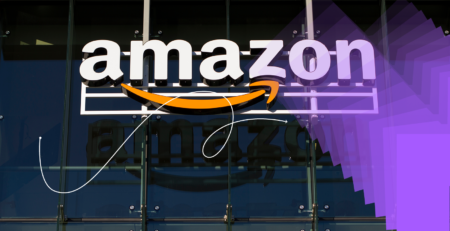15 Supercharged Strategies to Revolutionize Your Brand
The Challenge Every Brand Faces Today
Your brand exists in a deafening digital crowd where even well-funded campaigns risk becoming just another whisper. The digital ecosystem has become overwhelming, with attention now a fragmented, fleeting resource dispersed across countless platforms. Influence is decentralized and held by communities and creators, not commanded by corporations.
The modern consumer has fundamentally transformed. 71% of consumers now expect personalization as a baseline standard, with 76% expressing frustration when brands fail to deliver it. Beyond convenience, they seek connection and meaning. Research indicates that the buying choices of two-thirds of U.S. consumers are now shaped by their social values, making purpose-driven branding an economic necessity, not an ethical choice. This conscious consumer grows increasingly wary of data exploitation and rewards brands that champion privacy and transparency.
This guide presents 15 proven strategies that will revolutionize your brand, organized around four pivotal shifts that define modern brand success. At Trace Brand Building, we’ve used these exact strategies to deliver a median 34% sales lift for our clients within 90 days of implementation.
Part I: The Foundational Revolution
Modern consumers don't just buy products; they buy into brands that stand for something. Authenticity is no longer a buzzword but a core business driver. The data shows a clear preference for brands that are transparent and purpose driven.
This chart illustrates the top factors consumers associate with brand authenticity. "Honest about products/services" is paramount, highlighting the need for clear, truthful communication in all marketing and operational efforts.
Before deploying advanced technology or launching experiential campaigns, your brand’s foundation must be recalibrated for the modern era. These strategies address the fundamental essence of your brand, moving beyond traditional identity work to embed deeper purpose, emotional intelligence, and creator-like behavior into its core DNA.
Strategy 1: Purpose-Driven Branding as Business Strategy
What is purpose-driven branding?
Purpose-driven branding is the practice of defining and activating a brand’s fundamental reason for being, beyond the generation of profit. It requires the clear articulation of three interconnected elements: the Brand Purpose (the ultimate “why” the brand exists to serve society), the Brand Mission (the “how” it works to achieve that purpose), and the Brand Vision (the “what if” that describes what ultimate success looks like).
The data supporting purpose-driven branding is unequivocal. 68% of B2B buyers now consider a supplier’s purpose when making purchasing decisions, making it a critical factor in commercial relationships. Studies show purpose-led brands are more likely to experience positive growth. One analysis found that an investment in a portfolio of purpose-driven brands would have been 400% more profitable than an equivalent investment in the S&P 500 over a decade. This is not philanthropy; it is a potent and proven business strategy that informs every facet of an organization, from research and development to human resources.
The Discovery Process
The journey begins with a deep, immersive discovery phase to unearth your brand’s authentic “why”. This is not an exercise in invention but of excavation, identifying the genuine societal need your brand is uniquely positioned to address. This requires a nuanced understanding of the business, its audience, and the competitive landscape.
Once discovered, the purpose must be codified into a Brand Manifesto. This document serves as an internal and external declaration of the brand’s mission, vision, and values, providing a clear and inspirational guide for all stakeholders. The manifesto cannot be a mere document; it must be a living strategy woven into every aspect of the business.
Case Studies in Action
Patagonia’s purpose to “save our home planet” is not a marketing tagline; it is the operational blueprint for the entire company. Patagonia’s marketing communications prioritize brand storytelling that spotlights environmental causes, often eschewing direct product promotion entirely. This unwavering commitment has cultivated a fiercely loyal “tribe” of consumers who see their purchases as an act of alignment with their own values.
Dove initiated a radical pivot in 2004, moving away from traditional beauty promises to embrace a profound new purpose: to challenge and redefine restrictive beauty standards. The “Campaign for Real Beauty” was not just an advertising concept; it was a mission that led to the creation of educational programs and school curricula designed to boost self-esteem in young women. This purpose-driven transformation had a staggering commercial impact, driving a sales increase from $2.5 billion to $4 billion and establishing Dove as one of Unilever’s most valuable brands.
For CPG and food clients, Chipotle provides a powerful narrative. By focusing on sustainability, transparency, and nutrition, Chipotle has built a loyal tribe that identifies with its values. This stands in stark contrast to competitors like Taco Bell, whose focus on price fosters a purely transactional, and therefore less resilient, customer relationship.
In the B2B space, companies like Tenzo and Traace offer compelling examples where the product itself is the purpose. Tenzo’s AI platform exists to reduce food waste, while Traace’s technology empowers businesses to track and reduce their carbon footprint. For these clients, marketing is not about selling a product but about educating the market on a critical issue and showcasing the tangible, measurable impact of their solution.
Strategy 2: Neuromarketing-Infused Storytelling
A fundamental truth of human behavior is that the vast majority of purchasing decisions are not made through conscious, rational deliberation but are driven by subconscious emotions and cognitive biases. Traditional market research methods, such as surveys and focus groups, often fail to access these deep, non-conscious drivers, relying instead on self-reported data that can be unreliable.
The Science Behind Consumer Behavior
Neuromarketing is the application of principles and technologies from neuroscience and psychology to the field of branding and marketing. It involves using sophisticated tools to measure physiological and neurological responses to brand stimuli. By measuring what consumers feel rather than what they say, brands can craft stories and experiences that are not just passively consumed but are deeply felt and permanently encoded in memory.
Key Neuromarketing Technologies:
Electroencephalography (EEG) measures electrical activity in the brain to gauge real-time emotional engagement and cognitive load. This technology allows brands to understand moment-by-moment responses to advertisements or product experiences.
Eye-Tracking monitors where a consumer’s gaze falls and for how long, providing invaluable data on visual attention and the effectiveness of design hierarchy. This helps identify which elements capture attention and which are ignored.
Facial Coding analyzes micro-expressions to decode subconscious emotional reactions to an ad, logo, or package design. These fleeting expressions reveal true emotional responses that consumers may not even be aware of themselves.
Three Core Pillars of Neuromarketing Strategy
Systematic Sensory Branding involves the intentional and consistent design of how a brand is perceived through all five senses. The goal is to create a cohesive and multi-sensory brand world that reinforces the brand’s identity at a subconscious level. This includes everything from signature scents in retail environments to the specific texture of packaging materials.
Strategic Emotional Framing requires brands to craft narratives engineered to trigger specific, positive emotions. Feelings of joy, nostalgia, security, or aspiration are powerful encoders of long-term memory. By understanding the emotional triggers of their target audience, brands can create stories that resonate on a primal level.
Enhancing Cognitive Fluency leverages the fact that the human brain is wired to prefer things that are easy to process. Minimalist design, characterized by clean lines, simple typography, and uncluttered layouts, reduces “cognitive load.” The brain interprets this ease of processing as a signal of trustworthiness, quality, and competence.
Mastery in Practice
Coca-Cola is a master of multi-sensory branding and emotional framing, informed by deep neuromarketing research. The brand consistently uses EEG and eye-tracking to fine-tune its global advertising campaigns for maximum emotional resonance. Its sensory identity is holistic and powerful: the iconic “Coca-Cola Red” is a potent visual trigger; the sharp “hiss” of a bottle opening is a universally recognized sound cue; and the unique contour of the glass bottle provides a distinct tactile experience.
Apple’s brand strategy is a case study in leveraging cognitive fluency. The brand’s unwavering commitment to minimalist design in its products, packaging, and retail environments is a deliberate strategy to reduce cognitive load. This simplicity creates a powerful, subconscious perception of quality, sophistication, and user-friendliness. The meticulously designed unboxing experience is a prime example of tactile sensory branding, engineered to deliver a feeling of premium quality and satisfaction before the product is even turned on.
At Trace Brand Building, we introduce Brand Cognition Audits as a premium service. By partnering with specialized neuromarketing firms, we offer clients data-driven creative optimization, moving the conversation from subjective feedback to objective, scientific validation. For healthcare clients, we design patient communication materials optimized to reduce cognitive load and anxiety through calming palettes, clear typography, and intuitive information hierarchy.
Strategy 3: The Brand as Creator (The Social-First Paradigm)
The foundational model of advertising, where brands interrupt cultural conversations with paid messages, is fundamentally broken. Today’s consumers are suffering from “social tiredness”; they are adept at filtering out and ignoring anything that “smells like commerce”. This is where our approach to brand awareness becomes critical.
The Trust Shift
A recent study found that 61% of consumers trust content from individual creators, while only 38% trust content from brands. This reality necessitates a paradigm shift. The most successful and resilient brands of 2025 and beyond will not simply advertise on social media; they will adopt a “social-first” approach to brand building itself.
The social-first paradigm requires a brand to transform its role from that of an advertiser to that of a creator. This means a strategic pivot away from producing promotional materials and toward creating content that delivers genuine, standalone value to the audience through entertainment, education, or inspiration. This approach demands a loosening of rigid, traditional brand controls, an embrace of co-creation with communities and influencers, and the operational mindset of a media company rather than a product manufacturer.
Operational Shifts for Creator Success
Embrace Raw and Honest Content: The aesthetic of authenticity has replaced the gloss of perfection. Polished, pixel-perfect content is now immediately perceived as an advertisement and is often ignored. Brands must embrace a “little real, raw, unpolished, unedited edge” to give their content personality and relatability. This involves showcasing the human side of the business, including struggles and behind-the-scenes moments.
Prioritize Product-Led Content: Instead of generic blog posts or broad lifestyle content, brands should create content that demonstrates the product in action. This means showing real use cases, detailed workflows, and authentic screenshots or video clips. This type of content is often slower and more resource-intensive to produce, but it yields significantly higher conversion rates because it provides tangible value and proof of concept.
Master Micro-Content and Short-Form Video: Attention is now measured in seconds. Brands must become proficient in producing engaging 15-30 second videos for platforms like TikTok, Instagram Reels, and YouTube Shorts. The key performance indicator for this content is not just views, but completion rate, with a target of 80% or higher, indicating that the content is compelling enough to hold a user’s fleeting attention.
Revolutionary Brand Examples
Liquid Death behaves less like a beverage company and more like an irreverent media and entertainment brand. Its “Murder Your Thirst” campaign and heavy metal-inspired aesthetic are built for social sharing, using humor and shock value to create content that people want to watch and share, regardless of the product.
CeraVe achieved explosive growth by leveraging the credibility of dermatologists on TikTok. Instead of producing traditional ads, CeraVe partnered with these “Derm-fluencers” to create educational content that explained the science behind its products. This strategy built immense trust and credibility organically, turning medical professionals into the brand’s most powerful advocates.
At Trace Brand Building, we restructure campaign development processes around a “Content and Community” model, rather than the outdated “Media and Creative” framework. This involves building in-house capabilities for agile, short-form video production and offering strategic community management as a core service. We recommend all clients reallocate a significant portion of their traditional paid media budget into a dedicated “Creator Fund” to build diverse networks of relevant micro-influencers whose values and audience align with the brand.
Part II: The Technological Revolution
Your brand is no longer just what you say it is; it's the sum of all interactions customers have with you, especially online. A seamless digital experience is non negotiable, and personalization is the new standard.
Investment in Brand Experience Pays Off
The chart shows a clear trend: companies are increasing their investment in digital customer experience. Areas like AI-powered personalization and interactive content are seeing the most significant growth, signaling a strategic shift towards more dynamic and responsive brand interactions.
Hyper Personalize the Journey: 71% of consumers expect personalized interactions.
Create Immersive Content: Use AR, VR, and interactive formats to engage users.
Master Omnichannel Consistency: Ensure a seamless brand voice and experience across all platforms.
Leverage AI for Predictive Insights: Use AI to anticipate customer needs and trends.
Digital tools, and particularly Artificial Intelligence, have evolved from being supplementary aids to forming the central nervous system of brand strategy and execution. This transformation is not about replacing human creativity but augmenting it, enabling brands to operate with a level of intelligence, personalization, and efficiency that was previously unimaginable.
Strategy 4: AI-Powered Hyper-Personalization at Scale
The era of one-size-fits-all marketing is definitely over. Research shows that 71% of consumers expect personalization, and 76% become frustrated when it is absent. This expectation has created a significant opportunity, as hyper-personalization can lift revenues by 5-15% and increase marketing return on investment by 10-30%.
Understanding Hyper-Personalization
Hyper-personalization represents a significant leap beyond basic personalization tactics like using a customer’s first name in an email. It involves leveraging granular, real-time data including browsing behavior, purchase history, geographic location, and even contextual factors like the time of day or local weather to dynamically adapt every customer touchpoint. This advanced approach, powered by AI and machine learning, allows brands to deliver individualized content, bespoke product recommendations, and highly relevant advertising at scale, making each customer feel uniquely seen and understood.
The Technology Stack
Building a robust first-party data foundation is paramount with the deprecation of third-party cookies. This data, gathered through website interactions, loyalty programs, and direct feedback, is the fuel for any effective personalization engine.
AI and ML are essential for making sense of vast and complex datasets. These models can identify subtle patterns in customer behavior, segment audiences into highly specific “micro-communities,” and predict future needs and preferences with remarkable accuracy.
Generative AI (GenAI) solves the content creation problem by enabling the automated creation of tailored copy, imagery, and even video at scale, making it feasible to deliver a unique message to each individual.
Excellence in Execution
Sephora, widely regarded as an “omnichannel savant,” masterfully uses data and technology to personalize the customer journey. Its mobile app features the “Sephora Visual Artist,” an AR tool that allows users to virtually try on makeup. The data from these interactions, combined with past purchase history, is used to generate highly personalized product recommendations and targeted discounts, creating a seamless and highly relevant shopping experience.
Amazon’s recommendation engine is a foundational example of hyper-personalization’s power. By analyzing a user’s browsing history, past purchases, and the behavior of similar customers, Amazon’s algorithms can suggest products with a high probability of purchase. This system is a significant driver of the company’s sales and a key component of its customer retention strategy.
Strategy 5: AI-Driven Brand Management & Predictive Analytics
The speed and complexity of the modern market have rendered traditional methods of brand tracking and analysis insufficient. AI-driven brand management is now essential for maintaining situational awareness, allowing brands to monitor their health, understand public perception, and anticipate market shifts in real-time.
Core AI Management Functions
Real-Time Performance Tracking continuously monitors key brand metrics to provide an up-to-the-minute view of brand health. This includes tracking brand mentions, engagement rates, and competitive positioning across all digital channels.
Building Predictive Capabilities
Establishing an AI-powered listening post requires deploying sophisticated AI tools that continuously scan the digital landscape. These tools capture and analyze brand mentions across social media, forums, news sites, and review platforms, providing real-time understanding of how the brand is being discussed and perceived.
Developing predictive forecasting models utilizes machine learning to build models that can identify early signs of market trends or potential crises. By analyzing patterns in data, these models provide the foresight needed to make proactive strategic decisions.
Tracking and optimizing for “AI Visibility” has become critical as brands must ensure visibility within AI-driven search results, such as Google’s AI Overviews and chatbot responses. This requires a new form of optimization, treating these AI platforms as a primary search channel and actively working to be cited as an authoritative source.
Healthcare’s AI Revolution
The healthcare industry provides compelling examples of AI’s power in predictive analytics and management. AI algorithms analyze vast public health and demographic datasets to identify populations most likely to require specific medical services, allowing for highly targeted and effective public health campaigns. On a more granular level, AI can forecast future patient needs based on seasonal trends and other factors, enabling hospitals and clinics to allocate resources and staff proactively. One dental clinic that implemented an AI-driven system for keyword research, content personalization, and automated patient review requests saw a remarkable 200% increase in new patient bookings.
The evolution of brand building reveals a nuanced symbiosis between AI and human creativity. AI excels at tasks of scale, speed, and pattern recognition, representing the “science” of branding. However, AI cannot replicate the uniquely human qualities that give a brand its soul: strategic vision, genuine creativity, emotional intelligence, and deep understanding of cultural context. At Trace Brand Building, we ensure technology serves your brand’s authentic purpose and story, positioning ourselves as vital strategic guides in an increasingly complex, AI-driven world.
Strategy 6: Immersive Branding with Extended Reality (XR)
In a media environment saturated with 2D screen-based content, brands must seek new dimensions to capture attention and create truly memorable interactions. Extended Reality (XR), an umbrella term for Virtual Reality (VR), Augmented Reality (AR), and Mixed Reality (MR), offers this new dimension. The global VR market is on a steep upward trajectory. More significantly, AR has already become a mainstream expectation, with over 1 billion people using it daily.
Understanding Immersive Technologies
Augmented Reality (AR) overlays digital information or virtual objects onto the real world, typically through a smartphone camera. This is used for virtual product try-ons, interactive packaging, and enhanced retail displays. AR bridges the gap between digital and physical experiences, allowing consumers to visualize products in their own environment.
Virtual Reality (VR) creates a fully immersive, computer-generated environment that users can explore, typically with a headset. This is used for immersive brand storytelling, virtual events, and product simulations. VR transports users completely into the brand’s world, creating unforgettable experiences.
Integration Strategies
AR can be seamlessly woven into existing touchpoints to enhance the experience. For example, a CPG brand’s packaging could be scanned to reveal recipes and sourcing information, or a furniture retailer’s catalog could allow customers to place virtual items in their own homes. This practical application directly addresses purchase barriers.
VR enables brands to create standalone experiences that transport users into the brand’s world. Travel companies like Thomas Cook have used this to offer a “Try Before You Fly” experience, while outdoor brands like The North Face have created virtual mountain climbs, allowing consumers to feel the brand’s adventurous spirit.
Hybrid experiences blend the physical and digital. A live event could be enhanced with AR layers that provide additional information or gamified experiences, creating a richer and more engaging activation.
Market Leaders
The IKEA Place App is a canonical example of AR’s practical power. The app allows users to see exactly how a piece of IKEA furniture would look and fit in their own space. This brilliantly simple application directly addresses a major barrier to purchase uncertainty about size and style, leading to increased sales and reduced product returns.
Sephora’s Virtual Artist, as previously mentioned, uses AR for virtual makeup try-ons. It provides immense utility to the customer, allowing them to experiment with products from anywhere, and it directly drives sales by increasing purchase confidence.
At Trace Brand Building, we form strategic partnerships with specialized XR development studios. This allows us to offer immersive experience design as a high-value service. For CPG clients, we develop AR-enabled packaging where wine bottle labels come to life with winemaker videos. B2B clients benefit from VR product demonstrations for complex machinery. Healthcare clients can develop VR experiences for surgical visualization and therapeutic applications.
Strategy 7: Sonic Branding for a Voice-First World
The way we interact with technology is becoming increasingly auditory. The rise of voice assistants, explosion in podcast listenership, and integration of voice commands into everything from cars to home appliances mean consumers spend more time in screenless environments. In this voice-first world, a brand’s visual identity becomes invisible. Research has shown that advertisements featuring sonic brand cues are 8.5 times more effective than those with only visual assets. This aligns perfectly with our media and advertising strategies.
The Architecture of Sound
Sonic branding is the strategic use of sound to create a consistent, ownable, and recognizable audio identity for a brand. This extends far beyond a simple jingle. A comprehensive sonic branding strategy involves creating a “Sonic DNA” – a flexible and cohesive audio architecture that can be adapted and deployed across every conceivable touchpoint where the brand can be heard. This includes everything from the music in a television commercial to the brief, reassuring sound a payment terminal makes after a successful transaction.
Building Sonic Identity
Developing the Sonic DNA requires a core melody or theme that is simple, pleasant, memorable, and crucially, versatile. It must be adaptable enough to feel appropriate in a wide range of contexts, from a high-energy sporting event to a quiet, emotional moment.
From the Sonic DNA, a short, distinctive sound is extracted to serve as the audio equivalent of the visual logo. This is the most frequently used brand asset and must be instantly recognizable.
The power of a sonic brand is built through repetition and consistency. The sonic identity must be rigorously deployed across all audible touchpoints: TV and radio advertising, podcast sponsorships, mobile apps, in-store environments, call center hold music, and digital payment confirmations.
Global Excellence in Sound
Mastercard’s sonic branding is the global benchmark for excellence. The company invested heavily in creating a comprehensive sonic architecture designed to be globally resonant yet locally adaptable. Its most powerful application is the “acceptance sound” – the brief, melodic chime that plays at point-of-sale terminals. This sound is engineered to subconsciously instill feelings of trust, security, and finality. Research has shown that hearing this sound increases consumer trust in the transaction by a factor of four. Within just 12 months of its launch, 77% of customers reported that the sonic brand had made Mastercard more trustworthy. The brand’s Sonic DNA is also adapted for cultural relevance across its global sponsorships and has even been integrated into a full music album featuring emerging artists.
McDonald’s “I’m Lovin’ It” jingle – the simple, five-note “ba da ba ba ba” – is one of the most recognized pieces of audio in the world. It is a masterclass in creating a sonic logo that is catchy, simple, and perfectly aligned with the brand’s core emotional promise of joy and satisfaction. Its consistent use for over two decades has embedded it deep in the collective cultural consciousness.
Part III: The Trust Stack Revolution
The strongest brands are built with their customers, not just for them. Fostering a community creates loyal advocates who become an integral part of your brand's story and growth.
The Power of Brand Communities
A thriving brand community is a powerful asset. It not only boosts loyalty but also drives innovation and organic growth. The data shows that members of brand communities spend more and are more likely to recommend the brand to others.
Build a Thriving Community: Create spaces for customers to connect with each other and your brand.
Co-Create with Your Audience: Involve customers in product development and content creation.
Empower User-Generated Content (UGC): Encourage and showcase content from your fans.
In an era of heightened consumer consciousness and skepticism, trust is the single most valuable currency a brand can possess. The Trust Stack consists of demonstrable Sustainability, ethical and culturally fluent Localization, and unwavering Data Privacy. These are deeply interconnected pillars that collectively signal a brand’s character and integrity. As our team of brand strategists understands, building trust requires authenticity at every level.
Strategy 8: Sustainability as Core Brand Value
Sustainability has transitioned from a niche concern to a mainstream, decisive factor in consumer purchasing behavior. A significant majority of consumers, particularly younger generations like Gen Z and Millennials, are actively seeking out and willing to pay a premium for brands that demonstrate genuine commitment to environmental and social responsibility. In 2024, 70% of consumers reported a preference for sustainable brands. This is not a fleeting trend but a fundamental shift in values. Brands that integrate sustainability into their core identity are fostering deeper loyalty, driving innovation, and ensuring compliance with increasingly stringent global regulations.
Beyond Greenwashing
True sustainability in branding goes far beyond “greenwashing” or superficial marketing claims. It requires the deep integration of environmental, social, and governance (ESG) principles into every aspect of the business:
Supply Chain Transparency involves ethically sourcing raw materials and ensuring fair labor practices throughout the production process. This means knowing and disclosing where materials come from and how workers are treated at every stage.
Eco-Friendly Operations require reducing carbon footprint, minimizing waste, and using renewable energy in manufacturing and logistics. This encompasses everything from factory emissions to transportation methods.
Sustainable Products and Packaging means designing products for longevity and using recyclable, compostable, or minimal packaging. This addresses the full lifecycle of products, from creation to disposal.
Corporate Social Responsibility (CSR) involves actively contributing to the well-being of the communities in which the brand operates, going beyond business operations to make positive social impact.
Measuring and Communicating Impact
A comprehensive sustainability audit of the brand’s entire value chain from sourcing to end-of-life product management identifies areas for improvement in environmental impact and social responsibility. Based on the audit, brands must establish specific, quantifiable sustainability objectives. This might include a target for carbon emission reduction or a deadline for transitioning to 100% recyclable packaging.
The brand’s sustainability journey, including both successes and challenges, must be communicated transparently to consumers. This involves authentic storytelling, clear on-pack labeling, and regular impact reporting to build credibility and avoid accusations of greenwashing.
Market-Driving Results
An extensive analysis of U.S. CPG purchasing data found that products marketed with sustainability attributes were responsible for 41% of the sector’s growth from 2013 to 2024. These products now hold a 23.8% market share and are growing at a 5-year compound annual growth rate of 12.4%, more than double the rate of conventionally marketed products (5.4%).
White Leaf Provisions needed to prove the value of its regenerative farming practices to retailers. By leveraging third-party impact data and a “Sustainability Scorecard” from the platform HowGood, White Leaf was able to educate its retail partners effectively. This data-driven approach resulted in the brand doubling its number of SKUs on the shelf in a priority grocery chain, a direct commercial outcome of its sustainability commitment.
Strategy 9: Ethical Localization & Cultural Fluency
In a globalized market, one-size-fits-all branding is a recipe for irrelevance. Consumers are increasingly drawn to brands that demonstrate deep understanding and respect for their unique local culture, values, and identity. Effective localization goes far beyond simple language translation; it requires nuanced cultural fluency that adapts everything from product offerings and messaging to store design and marketing campaigns.
Components of Cultural Fluency
Local Tastes and Preferences involves modifying product formulations or menus to suit regional palates. This requires deep market research to understand not just what people eat, but how and why they make food choices.
Cultural Norms and Values means tailoring messaging and imagery to reflect local social dynamics and belief systems. This includes understanding holidays, traditions, social hierarchies, and communication styles.
Language and Dialect requires using language that feels authentic and natural to the local population, including idioms and colloquialisms. This goes beyond translation to capture the nuances of local expression.
Visual Aesthetics involves adapting design elements, colors, and even physical store architecture to resonate with local design traditions and aesthetic preferences.
Research and Co-Creation
Before entering a new market, brands must invest in in-depth research to understand the cultural and regional characteristics of the target audience. This goes beyond demographics to explore traditions, daily rituals, and social values.
The most authentic localization efforts involve collaboration with local creators, designers, artists, and influencers. These individuals bring a lived cultural experience that ensures the brand’s expression is genuine and not a superficial imitation.
Brands must establish a clear framework that defines the core, non-negotiable elements of the brand identity while allowing local teams the flexibility to adapt other elements to fit their market.
Global Success Through Local Relevance
McDonald’s is a masterclass in balancing global consistency with local relevance. While the iconic Big Mac and World-Famous Fries are available nearly everywhere, the menu is extensively localized. In India, where a large portion of the population is vegetarian, McDonald’s offers meat-free options like the Maharaja Mac and the McSpicy Paneer. In Japan, customers can order a Teriyaki Burger, and in Canada, poutine is a staple. This strategy allows McDonald’s to deliver a familiar brand experience that is simultaneously respectful of local tastes.
Coca-Cola’s “Share a Coke” Campaign is a prime example of nuanced message localization. In Western markets like Australia, the bottles featured popular individual names. However, in China, where collective identity often holds more cultural weight than individualism, the labels were adapted to feature phrases like “Classmate” and “Best Friend.” This subtle but profound shift demonstrated deep cultural fluency that was key to the campaign’s success in that market.
San Pellegrino localizes its website content to align with regional trends while maintaining its core Italian heritage. The U.S. website features cocktail recipes to cater to the growing mixology trend, while the French website focuses on Italian food recipes, appealing to France’s deep appreciation for Mediterranean cuisine.
Strategy 10: Data Privacy as Brand Differentiator
Data is the lifeblood of digital marketing, but its misuse is the quickest way to destroy brand trust. High-profile data breaches and controversies have made consumers acutely aware and concerned about how their personal information is being collected and used. A Cisco report found that 84% of customers care about privacy and will actively choose companies based on their data practices. Brands that proactively champion user privacy are building a foundation of trust that translates directly into customer loyalty and commercial advantage.
Privacy-by-Design Philosophy
Radical Transparency involves clearly and simply communicating to customers what data is being collected, why it is being collected, and how it is being used. This means replacing dense, jargon-filled legal policies with user-friendly privacy centers.
Meaningful User Control means giving customers genuine and easy-to-use controls over their own data, making opt-in the standard rather than opt-out.
Data Minimization is a commitment to collecting only the data that is absolutely necessary to provide a product or service, signaling a thoughtful and respectful approach to data management.
Operational Integration
Privacy considerations must be a baseline requirement in the development of every new product, feature, and campaign, not an afterthought. This is the core principle of “privacy by design.”
Brands must translate complex legal privacy policies into clear, concise, and easily understandable language. Adobe has created user-friendly “Privacy Centers” that empower users to manage their information effectively.
Actively communicating the brand’s commitment to privacy in marketing campaigns turns a defensive compliance posture into a proactive, trust-building brand promise.
Apple’s Privacy Leadership
Apple has masterfully positioned itself as the technology industry’s foremost champion of user privacy, turning it into a core pillar of its brand identity and a significant competitive advantage over rivals like Google and Meta, whose business models are heavily reliant on data collection for advertising.
Apple explicitly calls privacy a “fundamental human right” and has built this ethos into its products and marketing. Features like App Tracking Transparency (ATT), which requires apps to get explicit user consent before tracking them, have been a massive hit with consumers, with over 80% of iOS users opting out of tracking.
Apple’s advertising campaigns on privacy, such as “Data Auction,” are designed not just to promote the iPhone but to educate consumers about the broader data privacy landscape. These campaigns cleverly and effectively position the iPhone as the solution to the problem of pervasive data tracking.
Apple’s ability to credibly claim the high ground on privacy is rooted in its business model. Because the company’s revenue is primarily derived from hardware sales, it does not have the same incentive as its competitors to monetize user data. This alignment between its business interests and its privacy stance makes its brand promise authentic and believable.
Part IV: The Experiential Revolution
The final revolution focuses on how a brand interacts with its audience. In a world of infinite digital content, the most powerful brands create memorable, cohesive, and emotionally resonant experiences. This is about moving beyond disconnected touchpoints and architecting a complete “brand world.” Understanding the critical relationship between brand identity and positioning is fundamental to this approach.
Strategy 11: Seamless Omnichannel Retail Experience
The modern customer journey is not linear; it is a fluid and unpredictable path that weaves across multiple channels. A customer might discover a product on Instagram, research it on a brand’s website, try it on in a physical store, and ultimately purchase it through a mobile app. In this environment, a disjointed experience where online and offline worlds feel disconnected is a major source of frustration and a key driver of customer churn.
Unifying the Brand World
An omnichannel strategy aims to provide a completely seamless and consistent customer experience, regardless of the channel or device a customer is using. It is about breaking down the silos between digital platforms, physical locations, and virtual spaces to create a single, unified brand world.
The core of an omnichannel strategy is a unified view of the customer. All data from online purchases, in-store visits, app usage, and customer service interactions must be consolidated into a single customer profile. This requires deep integration of technology, data, and operations to ensure that a customer’s history, preferences, and context are recognized and acted upon at every point of interaction.
To enable flexible fulfillment options like “buy online, pick up in-store” or “ship from store,” brands need a centralized inventory management system that provides real-time visibility across all locations, including warehouses and retail stores.
Retail associates must be equipped with the technology and training to bridge the digital and physical worlds. This means giving them access to customer profiles and inventory data so they can provide personalized recommendations and facilitate cross-channel transactions.
Revenue Through Integration
Mizzen+Main exemplifies the power of a unified commerce platform. Using Shopify POS, the brand consolidates a customer’s online and in-store purchase history into a single profile. Store associates use this information to make personalized style recommendations. If an item is out of stock in-store, the associate can use the “ship to customer” feature to have it sent directly from another store or the warehouse. This seamless integration has led to significant growth, with retail revenue increasing by 27% and online revenue by 15% since implementation. The brand’s highest lifetime value customers are consistently those who shop across multiple channels.
Nike’s omnichannel strategy focuses on creating a deeply personalized and interconnected ecosystem. The Nike App is central to this strategy, offering members exclusive products, personalized workout plans, and seamless integration with its physical retail stores. The app can be used in-store to scan products for more information, check inventory, and complete a mobile checkout. This fusion of digital convenience and physical experience creates strong emotional connections and drives sustained customer engagement.
At Trace Brand Building, we offer Customer Journey Mapping and Omnichannel Strategy as a specialized consulting service. This involves auditing existing channels, identifying points of friction, and developing strategic roadmaps for technology integration and operational alignment. For CPG clients, we bridge the gap between digital engagement and point of purchase through QR codes on packaging and location-based mobile ads.
The traditional marketing goal of acquiring a large, passive “audience” is becoming increasingly ineffective and expensive. In a world of fragmented attention, future-proof brands are shifting their focus from chasing mass awareness to cultivating loyal, niche communities. These dedicated micro-communities, built around shared interests and values, become a brand’s most powerful asset. They are not just consistent buyers; they are passionate advocates who generate organic word-of-mouth, provide invaluable feedback, and co-create the brand’s culture. Building a community fosters a sense of belonging, an emotional connection that transactional marketing can never replicate.
Creating Connection Spaces
Community cultivation is the strategic practice of creating spaces and experiences both online and offline where customers can connect with the brand and, more importantly, with each other. It is about shifting the brand’s role from a seller of goods to a facilitator of connections.
Creating Dedicated Spaces means establishing platforms like private online groups, niche newsletters, or dedicated forums where community members can interact. These spaces must be actively moderated and nurtured to maintain engagement.
Providing Exclusive Value involves offering community members exclusive content, early access to products, or unique experiences to reward their loyalty and encourage participation.
Fostering Co-creation means actively involving the community in the brand’s journey, from soliciting feedback on new product ideas to featuring user-generated content in marketing campaigns.
Building Thriving Communities
Go deeper than broad demographics to understand the specific psychographics, interests, and passions of your most loyal customers. These are the seeds of your community.
Choose the right venue for your community. This could be a Facebook Group, a Discord server, a branded forum, or a series of real-life meetups. The platform should match where your audience naturally congregates.
Consistently provide value to the community through exclusive content, expert AMAs (Ask Me Anything), and virtual workshops. Encourage member-to-member interaction and empower your most active members to take on leadership roles.
A community is a powerful listening tool. Pay close attention to the conversations happening within the group to gain deep insights into customer needs, pain points, and desires. Use this feedback to inform product development and brand strategy.
Micro-Communities Drive Macro Results
While large-scale examples like LEGO Ideas or Sephora’s Beauty Insider Community are well-known, the most agile and effective community strategies are often at the micro-level. A brand might create a private Slack channel for its top 100 customers, offering them direct access to the product team. A B2B software company could host exclusive monthly webinars for its power users to share advanced tips and gather feedback. These smaller, more intimate communities foster a profound sense of belonging and turn customers into true partners in the brand’s development.
Strategy 13: Minimalist Branding & Design
In an environment of overwhelming visual noise and information overload, simplicity has become a powerful strategic tool. Minimalist branding characterized by clean design, straightforward messaging, and a focus on essential elements is gaining traction because it aligns with a fundamental principle of cognitive psychology: the brain prefers clarity. An uncluttered visual aesthetic reduces cognitive load, which consumers subconsciously interpret as a sign of quality, confidence, and trustworthiness. By stripping away the non-essential, minimalist brands communicate their core message more effectively and stand out with a sense of calm and sophistication amidst the chaos.
The Philosophy of Less
Minimalist branding is a design philosophy that embraces the ethos of “less is more”. It is not about being empty or bland, but about distilling a brand’s essence to its most powerful and impactful elements.
Key characteristics include:
- Clean and uncluttered layouts with generous use of white space to create a sense of order and focus
- Simple typography, often using a single, well-chosen sans-serif font for clarity and modernity
- Limited color palette, typically employing a monochromatic or neutral color scheme to create a cohesive and sophisticated look
- Focus on essential messaging, communicating the brand’s value proposition directly and concisely
Disciplined Implementation
Before any design work begins, the brand must have absolute clarity on the single most important message it wants to communicate. Every design element must serve this core message.
Conduct a rigorous audit of all brand assets and remove any element that does not directly support the core message. This includes unnecessary graphics, text, and decorative flourishes.
Ensure that the design is not only aesthetically pleasing but also highly functional. For a website, this means intuitive navigation. For packaging, it means the essential information is easy to find and read.
Minimalism as Premium
Aesop is an icon of minimalist design. Its signature amber bottles and simple, type-based labels exude an air of apothecary-inspired sophistication. The understated design deliberately puts the focus on the high-quality formulations inside, communicating confidence and quality without shouting. The use of textured, matte-finish labels also adds a tactile, sensory element that enhances the premium feel.
MUJI has built its entire global brand on the philosophy of minimalism. The name itself is derived from “Mujirushi Ryōhin,” which translates to “no-brand quality goods.” MUJI’s products are functional, simple, and unadorned, and the brand famously uses no logo on its items. This radical commitment to simplicity creates a powerful brand narrative that speaks volumes through its intentional absence of embellishment.
At Trace Brand Building, we offer Brand Simplification or Visual Identity Refresh services, specifically targeting clients whose branding has become cluttered and dated over time. For CPG clients, minimalist packaging design can be a powerful differentiator on a crowded shelf. We guide clients in creating packaging that uses clean lines, neutral tones, and simple typography to communicate a sense of quality and purity, which is particularly effective for natural and organic products.
Strategy 14: Agile Branding & Iteration
The modern market is in a state of perpetual flux. Consumer behaviors shift, new technologies emerge, algorithms change, and competitors appear overnight. In this volatile environment, a rigid, static brand identity is a liability. Brands built for perfection and permanence risk becoming irrelevant. The future belongs to brands that are built for iteration and adaptation. An agile branding approach allows a brand to evolve and respond to market changes while remaining true to its core essence, ensuring long-term resilience and relevance.
Building for Evolution
Agile branding is the practice of building a flexible, modular brand system that can be quickly and easily adapted without compromising the core brand identity. It is about designing for evolution, not for a static, final state. This approach, borrowed from agile software development, prioritizes:
- Flexibility over Rigidity: Creating brand assets and guidelines that allow for variation and experimentation
- Iteration over Perfection: Continuously testing, learning, and refining brand messaging and creative assets based on real-world data and feedback
- Responsiveness to Change: Having the systems and processes in place to pivot quickly when consumer behavior or market conditions shift
Systematic Adaptation
Make data-driven iteration a core part of the marketing process. Continuously A/B test campaign variations, messaging, and creative to understand what resonates most with the audience. Use customer data and sentiment analysis to guide adjustments.
Living Brand Examples
Many successful modern technology brands, particularly in the SaaS space, operate with an agile branding mindset. Their websites and marketing campaigns are in a constant state of evolution, with messaging and visuals being tested and updated on a weekly or even daily basis. They use dynamic branding ecosystems where logos and color schemes can shift in real-time based on user data or context. This allows them to stay highly relevant and continuously optimize their brand for maximum impact in a fast-moving industry.
Strategy 15: The Synthesis – Building the BX Ecosystem
The preceding 14 strategies are not isolated tactics to be deployed piecemeal. They are interconnected components of a single, unified strategic imperative: the construction of a comprehensive Branded Experience (BX) Ecosystem. Revolutionizing a brand in the modern era requires a holistic approach that integrates every facet of the brand’s identity and interactions into a cohesive and compelling whole.
The Four Foundational Pillars
A successful BX Ecosystem is built upon four foundational pillars, each corresponding to a revolution detailed in this guide:
The Foundational Core (The ‘Why’): This is the heart of the brand, its reason for being. It is defined by a powerful, authentic Purpose that is brought to life through emotionally resonant, Neuromarketing-Infused Storytelling. This core purpose is then activated through a “Brand as Creator” mindset, where the brand earns its place in the culture by providing genuine value. The purpose is not just a statement; it is the engine of the entire ecosystem.
The Technological Nervous System (The ‘How’): This is the intelligent infrastructure that enables the ecosystem to function at scale and with precision. AI-Powered Hyper-Personalization ensures that every interaction within the ecosystem feels relevant and tailored to the individual. AI-Driven Brand Management acts as the brain, monitoring the health of the ecosystem and predicting future shifts. Immersive XR and Sonic Branding provide the new sensory languages that allow the brand to communicate in more profound and memorable ways. Technology is not the message; it is the medium that makes a meaningful, personalized brand experience possible for millions.
The Trust Stack (The ‘Permission’): This is the moral and ethical foundation upon which the entire ecosystem rests. Without it, consumers will not grant the brand the permission to engage with them. This foundation is built on three non-negotiable commitments: demonstrable Sustainability, ethical and Culturally Fluent Localization, and an unwavering respect for Data Privacy. In an age of skepticism, this Trust Stack is the price of entry for any brand wishing to build a long-term relationship with its customers.
The Experiential Layer (The ‘Where’ and ‘What’): This is the tangible manifestation of the brand, the world in which customers interact and form relationships. A Seamless Omnichannel Experience ensures that the pathways through this world are frictionless and consistent. Community Cultivation populates this world with loyal advocates who become its co-creators. Minimalist Design provides the aesthetic principles that make the world feel coherent, trustworthy, and sophisticated. Finally, an Agile Branding mindset ensures that this world can evolve and adapt, remaining relevant and engaging over time.
Transform Your Brand with Trace Brand Building
These 15 strategies represent a fundamental and necessary evolution in brand building. The transition from product-centric to purpose-driven economy, the integration of AI as a core strategic partner, the rise of the conscious consumer, and the demand for seamless, immersive experiences are not fleeting trends but defining characteristics of the new market reality.
The opportunity is clear: brands that embrace these strategies will thrive, while those clinging to outdated models will fade into irrelevance. At Trace Brand Building, we guide clients through this transformation, evolving from tactical execution partners to C-suite level strategic counsel.
Our MAGIC Audit Process
We begin with our proprietary 7-day MAGIC Audit that examines seven critical levers:
- Positioning
- Brand story
- Creative
- Messaging
- Offer
- Website
- Analytics
This comprehensive assessment maps the gaps between where your brand is today and where it needs to be to compete in the modern market. We then rebuild your positioning, identity, and copy through our done-for-you service. Your team simply approves while we handle the transformation.
Proven Results
We deliver a verified 10% sales lift within 90 days of implementation on the same ad budget. In our last five builds, clients saw a median 34% lift. This isn’t theory; it’s proven performance based on the exact strategies detailed in this guide.
Take Action Today
If you’re a CMO of a brand between $50M and $200M and growth has stalled, it’s not media. It’s message and positioning. Transform from unknown to iconic.
Book the MAGIC Audit or schedule a 20-minute eligibility check today.











